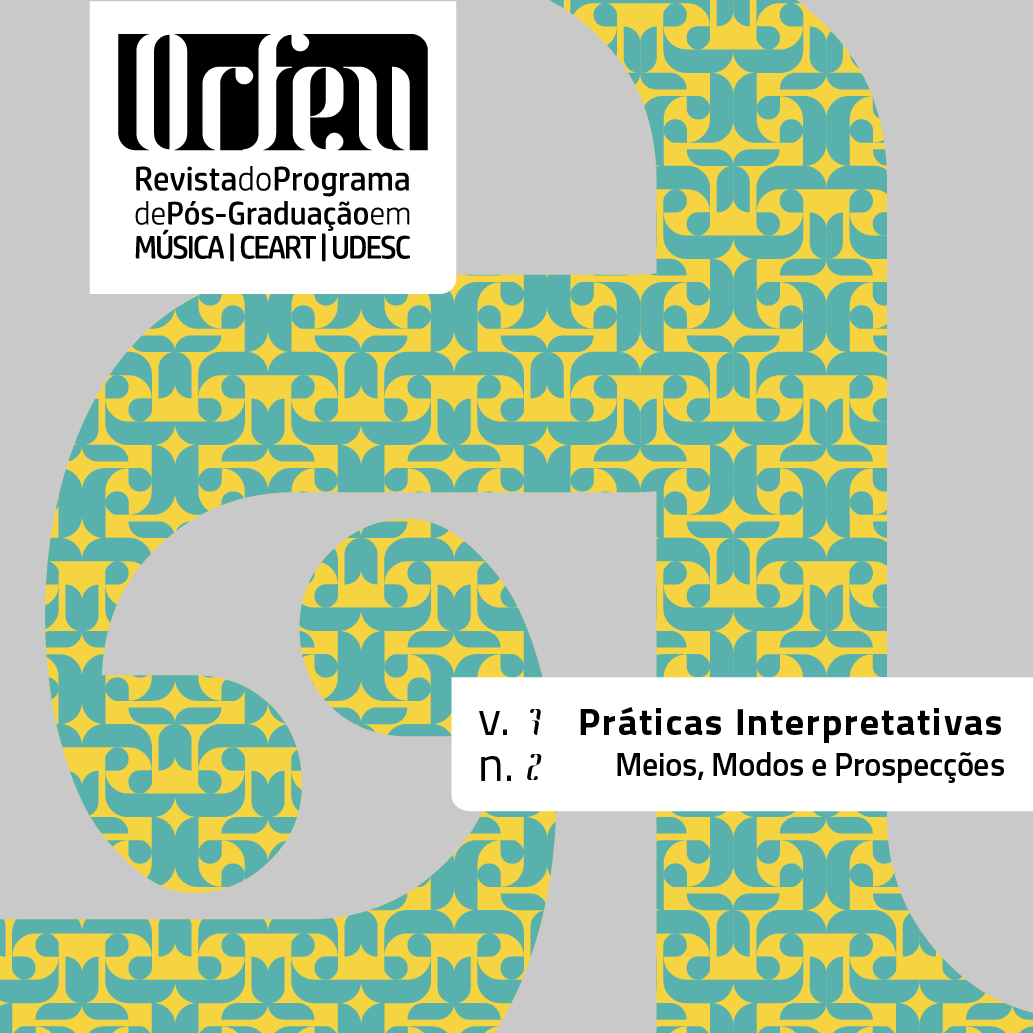Uma teoria formal de funções tonais generalizadas
DOI:
https://doi.org/10.5965/2525530407022022e0401Palavras-chave:
funções tonais generalizadas, David Lewin, teoria transformacional, análise musical, Hugo RiemannResumo
Tradução do seminal artigo A Formal Theory of Generalized Tonal Functions de David Lewin, publicado em 1982, que prefigura algumas ideias mais tarde desenvolvidas em Generalized Musical Intervals and Transformations (LEWIN, 1987) e que dariam origem à teoria transformacional e à teoria neorriemaniana. No artigo é construída, por meio de formalização matemática, uma estrutura denominada Sistema Riemann, que generaliza certos conceitos pertinentes à teoria da música tonal, como o de função harmônica e o de função melódica. São também conceituadas transformações que relacionam Sistemas Riemann entre si, abarcando e estendendo o escopo das transformações riemanianas tradicionais. Tais transformações podem ser interpretadas como correspondentes a outras noções teóricas familiares, como a transposição, a inversão, o “se tomar a relativa”, o “se tomar a mediante”, entre outras. Algumas pequenas análises de excertos de Wagner, Brahms, Stravinsky e Beethoven são elaboradas a título de mostrar a pertinência da teoria desenvolvida para a análise musical.
Downloads
Referências
BORETZ, Benjamin. “Musical Syntax (II)”. Perspectives of New Music, v.10, n.1, 1971.
FORTE, Allen. The Structure of Atonal Music. New Haven e Londres: Yale University Press, 1973.
HAUPTMANN, Moritz. Die Natur der Harmonik und der Metrik. Leipzig: Breitkopf und Haertel, 1853.
MICKELSEN, William C. _Hugo Riemann’s Theory of Harmony_. Lincoln and London: University of Nebraska Press, 1977.e
MISCH, Ludwig. Alla danza tedesca. Beethoven Studies, trans. G. I. C. DeCourcy. Norman: University of Oklahoma Press, 1953.
OETTINGEN, Artur von. Harmoniesystem in dualer Entwicklung Leipzig: W. Glaser, 1866.
HINDEMITH, Paul. The Craft of Musical Composition, trad. Arthur Mendel. London: Associated Music Publishers, 1942.
RAMEAU, Jean-Phillipe. Traité de l’harmonie réduite à ses príncipes naturels. Paris: Ballard, 1722.
RAMEAU, Jean-Phillipe. Nouveu système de musique théorique et pratique. Paris: Ballard, 1726.
RAMEAU, Jean-Phillipe. Generátion harmonique. Paris: Prault, 1737. RAMEAU, Jean-Phillipe. Démonstration du principe de l’harmonie. Paris: Durand, 1750.
WESTERGAARD, Peter. An Introduction to Tonal Theory. Nova Iorque: W. W. Norton & Company, Inc., 1975.
ZARLINO, Gioseffo. Le Institutioni Harmoniche. 3. ed. Veneza: Senese, 1573.
Referências da introdução
COHN, R. Lewin, David. Grove Music Online, 20 jan. 2001 (atualização em 27 ago. 2003). Disponível em: https://doi.org/10.1093/gmo/9781561592630.article.47754. Acesso em: 13 abr. 2022.
LEWIN, D. Behind the Beyond: A Response to Edward T. Cone. Perspectives of New Music, Vol. 7, nº 2, p. 59-65. Seattle: Perspectives of New Music, 1969.
LEWIN, D. Music Theory, Phenomenology, and Modes of Perception. Music Perception: An Interdisciplinary Hournal Vol. 3, nº 4, p. 327-392. Oakland: University of California Press, 1986.
LEWIN, D. Musical Form and Transformation: Four Analytic Essays. New York: Oxford University Press, 1993.
LEWIN, D. Generalized Musical Intervals and Transformations, 2ª ed. New York: Oxford University Press, 2007. 288 p.
Publicado
Como Citar
Edição
Seção
Licença
Copyright (c) 2022 Felipe Defensor Martins

Este trabalho está licenciado sob uma licença Creative Commons Attribution 4.0 International License.






